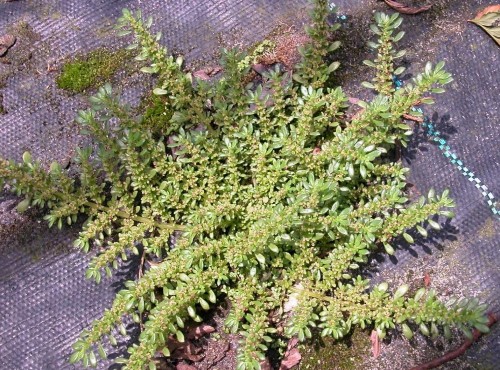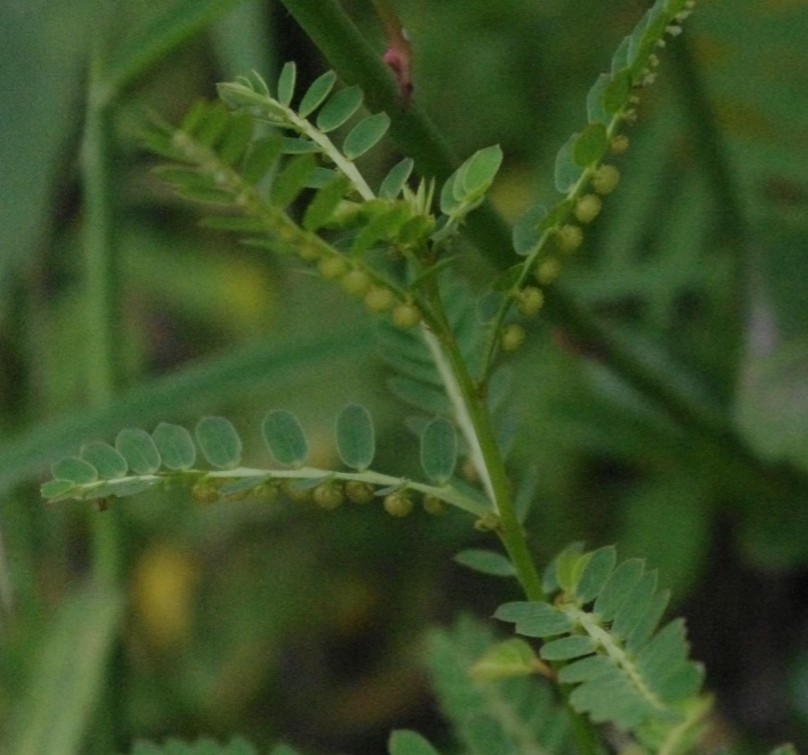As our brief cool spells end and seeds start sprouting, now is the best time to get ahead of weeds. When the warm weather weeds are small, they can often be successfully controlled with herbicides. Ignoring them now results in difficult-to-eradicate patches and more seeds for next year.
Let’s talk weed war basics. There are two types of weed killers: pre-emergent and post-emergent. The first line of weed defense this time of year is a pre-emergent herbicide. This keeps the weed seed from sprouting at all, stopping the problem before emerges. Conversely, post-emergent herbicides kill the plant after it has sprouted. Even those work best when weeds are small, however. Once the weed gets big and strong, it can be hard to kill – especially if it’s in the middle of a lot of other plants that you don’t want to harm, such as in a lawn or flower bed.
Surprisingly, not every herbicide works on all weeds. Even glyphosate, the ingredient in the popular Roundup™ spray, doesn’t kill every weed. I sprayed it on a problem patch and it killed almost everything – leaving a clear path for my nemesis, Artillery Weed, to take over. So the first rule is: know your weed before you try to kill it, so you can pick the right method. If you are not sure, take a sample to your local UF/IFAS Extension County office for help with identification .

Many herbicides are labeled for “grassy weeds” or “broadleaf weeds.” If the weed has long, narrow leaves and looks like grass (e.g. sedge, crabgrass), it’s a grassy weed. If it has broader leaves (e.g. dollarweed, spurge), it’s a broadleaf weed. Pretty simple. Still, there are some exceptions for herbicide effectiveness, so try to identify the specific weed and check the label.
Different people have different attitudes about turfgrass. Personally, if it’s green and looks somewhat like grass when it’s neatly mowed, I don’t stress about it. But many people insist on a pristine expanse of emerald-green lawn that could host a professional croquet club. No matter your turfgrass goals, the best weed prevention is a thick, healthy lawn. Mow at the right height for your type of grass, and apply recommended fertilizers and pest control. The Extension Center has guidelines for St. Augustine, Bahaia, Zoysia, and more – click here for more info or stop by your local UF/IFAS Extension County office for advice.
Most lawn weed-and-feed mixes contain both pre- and post-emergent herbicides. Check the label to see if (1) it’s safe for your grass type and (2) it works on your weeds. Also, check the conditions for when it should be applied – many herbicides will kill your grass if they are applied when the weather is too hot. Lastly, if your lawn has disappeared and all you have are weeds, kill the weeds, solarize to kill the seeds, and then resod.
In landscape beds, the best way to prevent weeds is to mulch. Pine bark, pine straw, and wood chips are all good. Apply to a depth of at least two inches. Avoid shredded mulch as it holds too much moisture, encouraging seed germination. Rubber mulch can be used for walkways and playgrounds, but isn’t ideal around plants. Don’t use rubber near sparks (including discarded cigarettes) as it is flammable.
Once you know your weed, the table below recommends a plan of attack. For larger weeds especially, the best approach is often hand-pulling (this is a good time to get to know some kids in the neighborhood who need pocket money), then follow up with a pre-emergent to take care of lingering seeds. I’ve found that persistence pays off – hand weed regularly for a year, use pre-emergents, and you will see greatly reduced or eliminated populations next year. You can win the weed war!

This blog post was written by UF/IFAS Extension Orange County Master Gardener, Mary Ann Pigora, class of 2017. The UF IFAS Extension Orange County Master Gardener Volunteers play a crucial role in the outreach of UF IFAS Extension.
| Weed | Best approach | Notes |
| Dollarweed | Post-emergent herbicide (Penoxsulam) | Invades moist areas but drought tolerant once established. No effective pre-emergent herbicides. Root bits left behind when hand pulling will regrow. |
| Doveweed | Hand pull, mulch, most herbicides | Atrazine is effective but when doveweed is growing, it is generally too hot to apply safely. Mulching beds is very effective. |
| Garden Spurge, Spotted Spurge, Grassleaf Spurge | Mulch, hand pull, most broadleaf herbicides | Grows back very fast from seeds, but it needs light to germinate so mulch is very effective. If hand pulling or using herbicides, will need multiple passes. |
| Artillery weed | Contact products containing citrus oil or oregano oil, mulch | Roundup does not work. Sheds lots of seeds, so difficult to eradicate with hand pulling. Mulch helps. Use pre-emergent for seeds after hand pulling. |
| Florida Betony | Hand pull, most pre- and post-emergent broadleaf herbicides | Atrazine for pre-emergent, 2,4-D, Dicamba, Penoxsulam for post-emergent. See http://edis.ifas.ufl.edu/pdffiles/EP/EP38800.pdf
|
| Chamberbitter | Mulch, use herbicides early | Tolerates mowing so sets in turf. When small, 2, 4-D (with dicamba & mecoprop or MCPP) and atrazine are effective. Once the stem gets woody, it is hard for herbicides to control. Hand weed, then use pre-emergent herbicide in cool weather. |
| Chickweed | Pre-emergent herbicide in the fall | Cool season weed, don’t treat after March as it will die in the hot weather anyway. |
| Florida Pusley | Hand weed, herbicide early | Usually only a problem if the turf is struggling. Herbicides are only effective when it is young. |
| Cutleaf, Evening Primrose | Multiple herbicide applications | Roundup alone will not work. Must be in a mix with dicamba, 2, 4-D, or flumioxazin. |
| Oxalis (Wood Sorrel) | Mulch, pre-emergent herbicide | Spreads by both tubers and seeds; seed pods explode and can spread seeds 12 feet away. Atrazine is not effective. Indaziflam controls seeds and small plants but not tubers. For for mature plants, spot treat with nonselective such as Roundup, Finale, Reward, or Scythe. |
| Globe sedge, Kyllinga | Mulch, many herbicides | This is not the same as nutsedge. Spreads by seeds and rhizomes. Pre- and post- emergents will work; see http://edis.ifas.ufl.edu/pdffiles/EP/EP49200.pdf |
| Yellow nutsedge, Purple nutsedge | Post-emergent | Spreads by seeds and rhizomes. Bentazone, Halosulfuron, Imazaquin, Sulfentrazone in turf products. See http://edis.ifas.ufl.edu/pdffiles/EP/EP49200.pdf |
| Crabgrasses (Blanket grass, Southern crabgrass, etc) | Pre-emergent early February, mulch | Annual, spreads by seed. Needs 4 days above 60 degrees to germinate, so use pre-emergent before that and reapply in a few weeks. Once it is growing it is hard to kill in turf, but can use a grassy weed killer in beds. Dithiopyr, Prodiamine, see http://edis.ifas.ufl.edu/pdffiles/EP/EP39500.pdf |
| Torpedo Grass | Roundup, Fusilade | Spreads by very deep roots. Any herbicide including Roundup will need multiple applications. There is no chemical control for St. Augustine. Make sure it is gone before resodding. Fusilade may be labelled for zoysia. See http://edis.ifas.ufl.edu/pdffiles/EP/EP38700.pdf |
| Bermudagrass | Roundup | Spot treat in St. Augustine, may need multiple applications. Allow St. Augustine to grow taller than normal to shade Bermudagrass. |
| Tropical Signalgrass | Pre-emergent | Pre-emergents include benefin + oryzalin, benefin + trifluralin, dithiopyr, imazaquin, and oryzalin. Nothing will provide full control. See http://edis.ifas.ufl.edu/pdffiles/EP/EP39300.pdf |
| Skunk vine | Hand pull, Roundup | Stem fragments will root. |
| Catsclaw vine | Dig, Roundup | Has a large tuber. |
| Pouzolzia Bush | Roundup | |
| Basket grass | Roundup | |
| Balsam Apple | Hand pull | A very large plant will have only one central root, so it is easy to hand pull. |
| Dodder | Prune below point of attachment, pre-emergent herbicide (seeds) | No chemical control. Must prune multiple times. Pre-emergent herbicide will control seeds for next year. Will not attach to monocots (grass-like plants), so change color beds to something like liriope. |
 1
1
